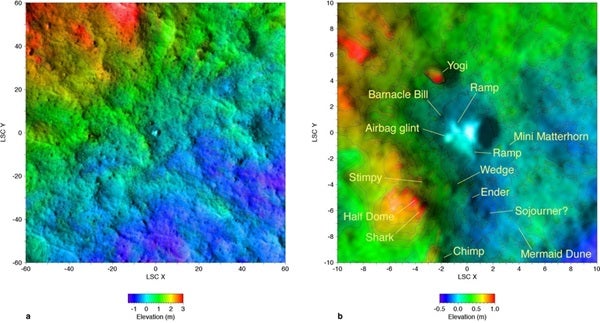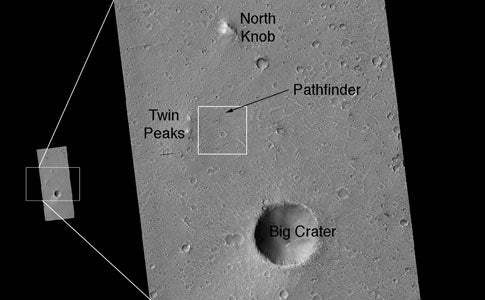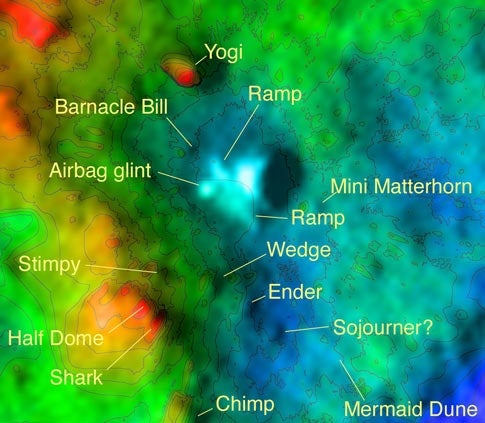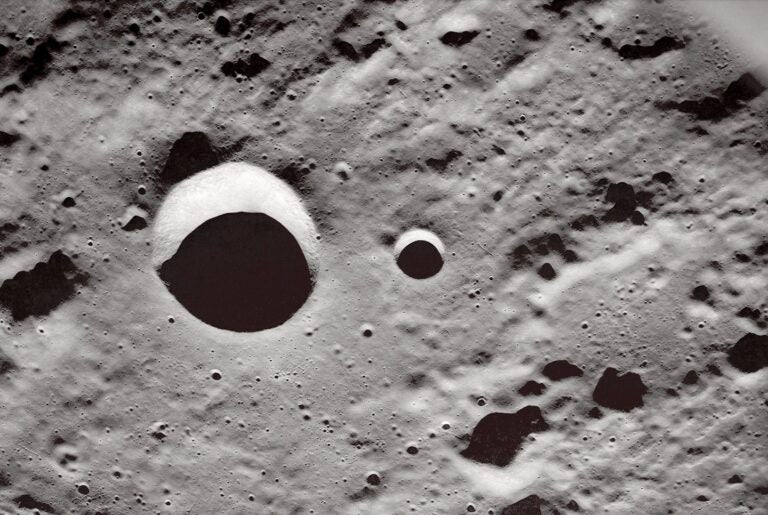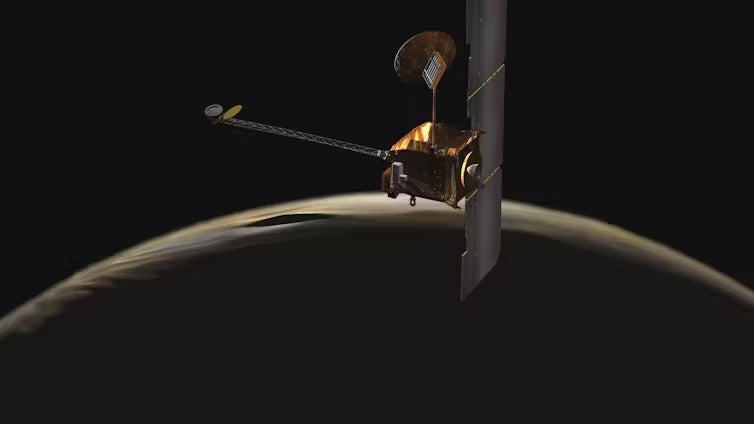In a planetary-science version of “Where’s Waldo?”, scientists with NASA’s Jet Propulsion Laboratory may have located the diminutive Sojourner rover that hitchhiked to the Red Planet aboard the Mars Pathfinder mission in 1997. The image, snapped by the Mars Reconnaissance Orbiter (MRO), includes the lander itself as well as its airbags, parachute, and fragments of its heat shield.
Sojourner’s last known position lay about 43 feet (13 meters) from the lander. MRO used its super-sharp High Resolution Imaging Science Experiment (HiRISE) camera to image the region around Pathfinder’s landing site December 21, 2006.
If the blob turns out to be Sojourner, it would indicate that the robot roved around on its own after the lander died, perhaps in an attempt to reestablish contact with home.
Previously, MRO images have spied both of the Mars Exploration Rovers (Spirit and Opportunity) and both Viking landers.
MRO scientists identified an indistinct blob about 20 feet (6 m) from the lander that does not appear to match anything in the landscape photographed at ground level by Pathfinder.
It may be Sojourner, or maybe not, says Alfred McEwen of the University of Arizona in Tucson, lead scientist for the HiRISE instrument. “It’s not a certain identification by any means,” McEwen cautions.

